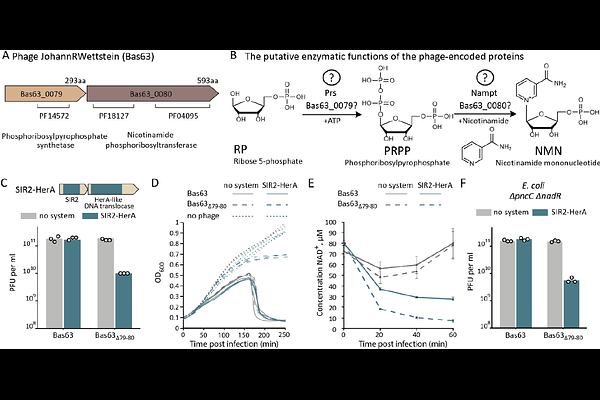Phages reconstitute NAD+ to counter bacterial immunity

Phages reconstitute NAD+ to counter bacterial immunity
Osterman, I.; Samra, H.; Rousset, F.; Loseva, E.; Itkin, M.; Malitsky, S.; Yirmiya, E.; Millman, A.; Sorek, R.
AbstractBacteria defend against phage infection via a variety of antiphage defense systems. Many defense systems were recently shown to deplete cellular nicotinamide adenine dinucleotide (NAD+) in response to infection, by breaking NAD+ to ADP-ribose (ADPR) and nicotinamide. It was demonstrated that NAD+ depletion during infection deprives the phage from this essential molecule and impedes phage replication. Here we show that a substantial fraction of phages possess enzymatic pathways allowing reconstitution of NAD+ from its degradation products in infected cells. We describe NAD+ reconstitution pathway 1 (NARP1), a two-step pathway in which one enzyme phosphorylates ADPR to generate ADPR-pyrophosphate (ADPR-PP), and the second enzyme conjugates ADPR-PP and nicotinamide to generate NAD+. Phages encoding the NARP1 pathway can overcome a diverse set of defense systems, including Thoeris, DSR1, DSR2, SIR2-HerA, and SEFIR, all of which deplete NAD+ as part of their defensive mechanism. Phylogenetic analyses show that NARP1 is primarily encoded on phage genomes, suggesting a phage-specific function in countering bacterial defenses. A second pathway, NARP2, allows phages to overcome bacterial defenses by building NAD+ via metabolites different than ADPR-PP. Our findings report a unique immune evasion strategy where viruses rebuild molecules depleted by defense systems, thus overcoming host immunity.